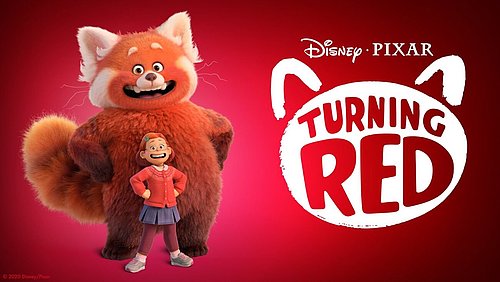
Why emotion makes brands unforgettable
Beyond Marketing: How Fans Shape Brand Identity Through Emotional Resonance

I’ve started re-watching Supernatural on Amazon Prime recently and (as I refuse to upgrade for ad-free viewing) I did a double-take when a Reacher trailer interrupted an episode, because in the background of that ad was the Kansas song ‘Carry On Wayward Son’. My reaction to this mismatch of a recognisable brand trigger to non-associated content can give a little insight into how brands achieve life-long fan affinity.
‘Carry on Wayward Son’ by Kansas appeared in the recap intro of Supernatural’s first season penultimate episode and every final episode for the next 14 seasons. It ended up becoming the fan-appointed unofficial theme tune of the show, even though it wasn’t intended to be.
Fans took so thoroughly to this song because it perfectly captured the show’s main character’s emotional hardships and selfless sacrifices for the benefit of others. The lyrics offer peace to a ‘wayward son’, to lay his weary head to rest and cry no more, explicitly voicing the unspoken motivations of the stoic MMC. As a result, the song acts as a representation of emotional connection between viewer and character, facilitating fan expressionism.
All this to say that, engaging fans across many senses and hitting emotional markers through multiple creative elements has the power to really embed a brand in fans’ everyday lives, or even their subconscious, especially if they enthusiastically choose to support a seemingly insignificant choice made by developers.
Fan Engagement Across Many Senses
The Fandom Journey begins when you experience ubiquitous and relevant exposure to the brand in question: in order for audiences to engage in the fandom, they have to be aware of it and feel that it is right for them. Sometimes, this takes the form of multiple TikTok’s in a single doomscroll session, other times its hearing different friend groups talk about the same topic weeks apart from each other.
While it’s useful to be exposed to the same concept in many different places, it is also useful to be exposed to it in many different ways: by diversifying your approach to marketing through multiple states of experience (i.e. audio, visual, IRL, online, casual conversation or OOH imagery), your concept takes up increasingly more real-estate in an audiences’ memory and subconsciousness.
Hitting Emotional Markers
It’s all well and good to have your diversified campaign across a broad range of channels but it doesn’t really mean anything to anyone unless it strikes an emotional chord for the viewer. Generally, the goal is to elicit a positive response from audiences: humour, wholesomeness or relatability work well for ad acknowledgement, but there are levels of emotional resonance to achieve deeper impact.
Psychologically speaking, the stronger the response a viewer has to a stimulus, the stronger the rate of retention they will experience after the fact. The stimulus which elicits this response will have a longer lasting impression on the viewer and increasingly influence their actions and decisions as a result, whether they realise it or not. Therefore, hitting deeper, more meaningful and multiple emotional markers with the audience has the potential to evoke greater affinity to the brand in question.
Enthusiastically Choose to Support
Fans – and young fans especially – want to feel involved in the brand narrative. They love their fandom so much, they want to feel that they had a hand in bringing it to life. Which, if you think about it, they do: brands experience success as a result of fans’ support and would fail without that engagement. However, fans don’t always latch onto the brand elements that marketers expect them to. There’s no exact science to understanding fans and, while research can support brands’ approaches to fan engagement, it can sometimes feel like a random numbers game of what catches on.
That means that when fans are enthusiastically supporting some random element of your brand, you lean into it and give them what they want. This emotional connection draws strength from the illusion of choice: fans feel that they have chosen that element to express their love of the brand, rather than being given it by marketers. This not only gives your fans the satisfaction of experiencing that repeat brand element, but it shows them that you value their input to brand narrative and expression. In the increasingly digital ecosystem of brand-to-fan engagement with younger audience, the two-way stream of communication is alive and well, and represents a wealth of insights for brand development if only you have the tools to action them.
Not only does this emotional engagement facilitate connection between the fan and the brand, but between many fans at once. The Kansas song became a marker of identity for Supernatural fans: it was something they could use to sign-post to other fans their shared interest in the show, or to mark themselves out as unique from non-fans around them. This absorption of brand elements into personal identity doubles-down in the emotional connection and life-long potential of brand affinity. It’s like looking around when someone calls your name, only for them to be addressing someone else: the hook on fans’ attention is so innate to their personality that it produces an immediate and uncontrollable reaction, even if it’s not targeted directly at them.
Embedding Life-Long Affinity
As a quick case study on the power of emotion-fuelled music use, spurred by my visceral and aghast reaction to ‘Carry On Wayward Son’ appearing in any media other than Supernatural content, we can learn more about the life-long effects of brand affinity. While it was not the intended outcome of the show developers, it was the fans actions that made this song the anthem of their fandom: it was their collective emotional response to the song lyrics and its relevancy to the main character that deepened fan affinity to the content and brand. I can tell you, at any point in my life that I hear this song I will think of Supernatural, and I guarantee that other fans will say the same.
The next question is: will I develop a love for Reacher as a result of recycled affinity and subconscious emotional attachment to a song, or will I wholeheartedly reject it for trying to cheaply replicate that sentiment? The answer: It’s all about authenticity.


